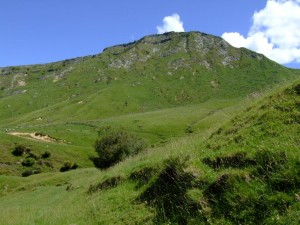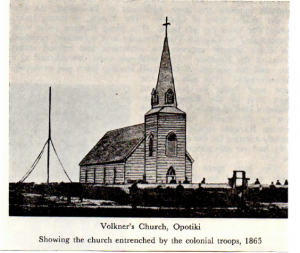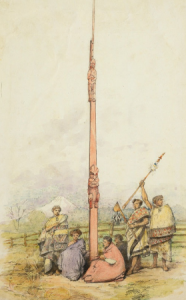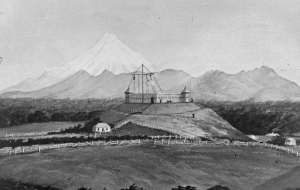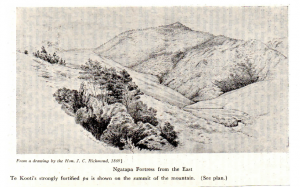 It can be revealing to compare historic sites, as they once existed, to see how they appear today. This allows us to observe how much the sites have changed, over time – or, how much they remain the same. Landscapes change over time for many reasons, not least which is agricultural development, a real feature of this country’s past of course.
It can be revealing to compare historic sites, as they once existed, to see how they appear today. This allows us to observe how much the sites have changed, over time – or, how much they remain the same. Landscapes change over time for many reasons, not least which is agricultural development, a real feature of this country’s past of course.
This page illustrates some of the New Zealand Wars sites – then and now. This is a fairly random selection. In time, thō, these comparative images will be arranged by field of engagement.
The siege of Ngatapa Pā
See images above, left and right, of the site of the Ngatapa battle, then and now. This engagement was fought between January 1-5, 1869, and involved Te Kooti’s people being held under siege by East Coast Māori. To read more of the East Coast wars, of which Ngatapa was a part, see here – East Coast Wars.
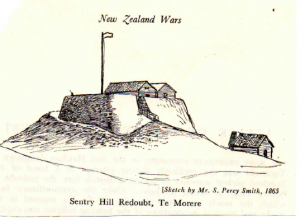
Attack on Sentry Hill
Sentry Hill is located mid way between Waitara and New Plymouth, on the road that deviates toward Lepperton and Inglewood.
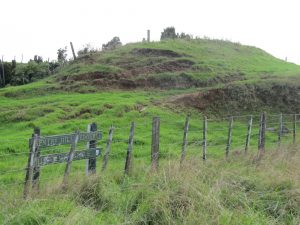
On 30 April, 1864, members of a Hau Hau war party attacked Sentry Hill, where a British Army Redoubt occupied an old Pā site named Te Morere. This attack brought the war back to North Taranaki, following an earlier truce of 1861.
The attack proved disastrous for Māori, with about 50 men killed and a further 40 seriously wounded. Today, Sentry Hill is a fairly desolate place, part of a dairy farm, just beside a very busy road. To read more about the battle fought at Sentry Hill, see here – Sentry Hill.
Julius Volkner was a minister of the Lutheran Church based at Opotiki, near Whakatane.
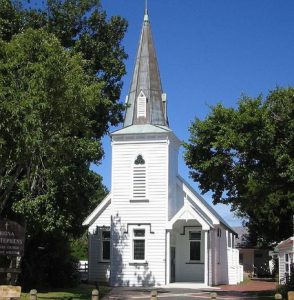
On 2 March 1865 , Volkner was hanged by Māori, from a tree just outside his church. The Māori were members of Hau Hau war parties, who were raiding in the area at the time. The accused Volkner of being a spy, and meted out this summary and tragic punishment.
Today, Volkner lies buried behind his church, which now stands in the main street of Opotiki. The Māori involved in the hangings were later apprehended by the Armed Constabulary and most were themselves later hanged in Auckland.
Fitzroy’s Pole, as it is commonly known, was erected by Te Ātiawa just north of New Plymouth in 1847.
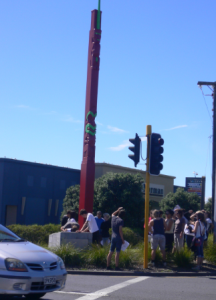
The pole was erected to signify to Pākehā that no more land would be sold, north of the pole, that is, in the direction of Waitara.
At the time, Māori in the area were involved in a ferocious civil war, between those who wished to sell land, and those who did not.
Māori called the pole Te Pou Tuataki, or the blocking pole. The pole was put in place by Parata Te Huia and Waitere Katatore, and stood 25 feet tall.
The civil conflict amongst Māori however was never satisfactorily resolved, especially once the Crown began taking sides, thus contributing to the outbreak of the war at Waitara in 1860.
You can read more about the war at Waitara, see here – War at Waitara.
The Omata Stockade was built at Omata, just south of New Plymouth, during the turbulent 1850s, when wholesale war threatened North Taranaki.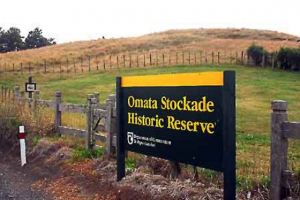
The stockade was manned by British troops. Their task was to guard the southern entrance to the town, apprehending any hostile Māori observed moving north, possibly endangering the town.
However, very little action was seen here, with the notable exception of the battle of Waireka, which was fought nearby on 28 March 1860. War had just broken out to the north of New Plymouth, at Waitara, on 17 March. Southern Māori were suspected of trying to move north, in support; they were intercepted at Waireka Pā, and an engagement followed.


